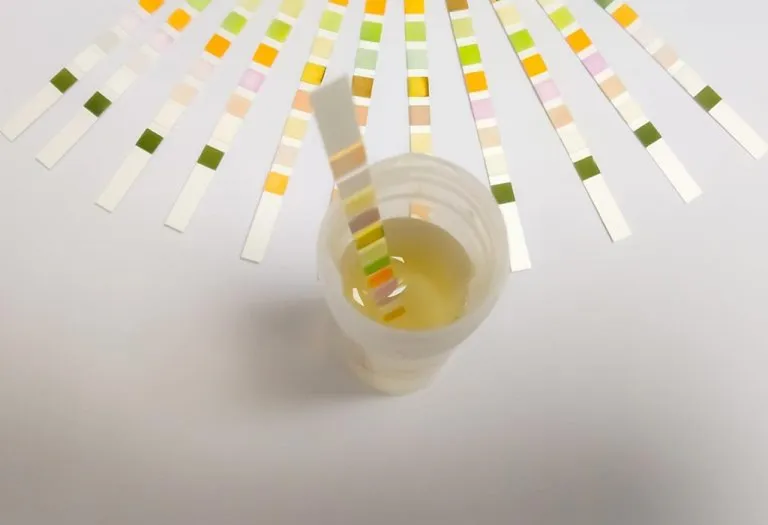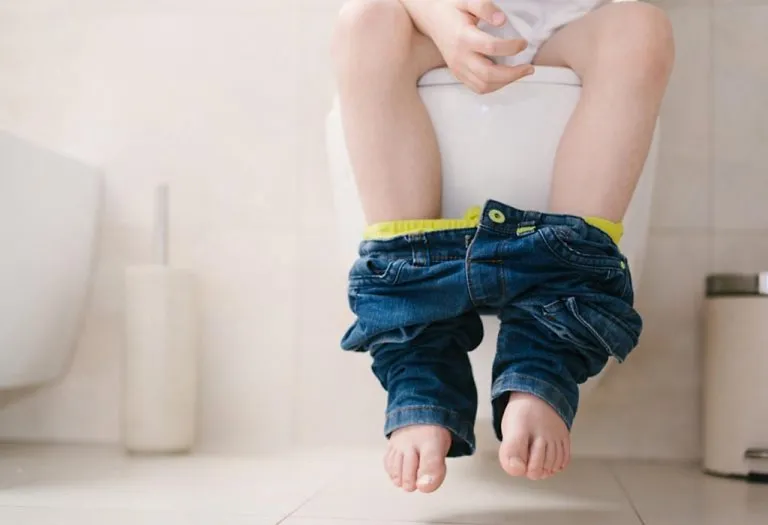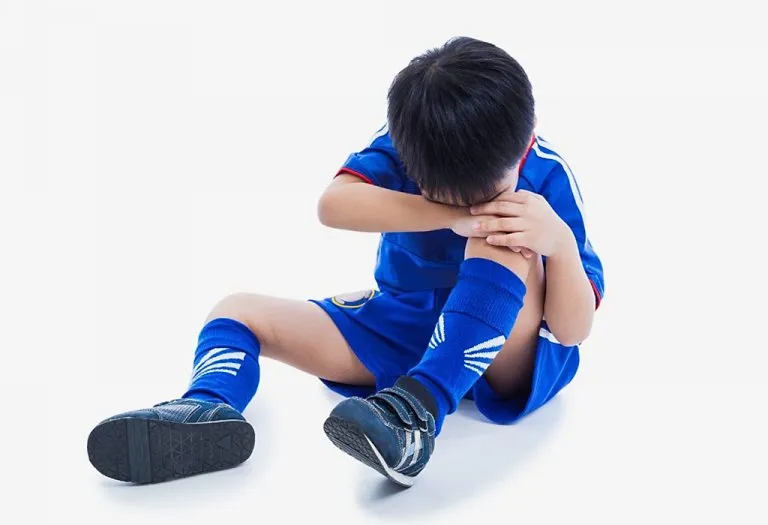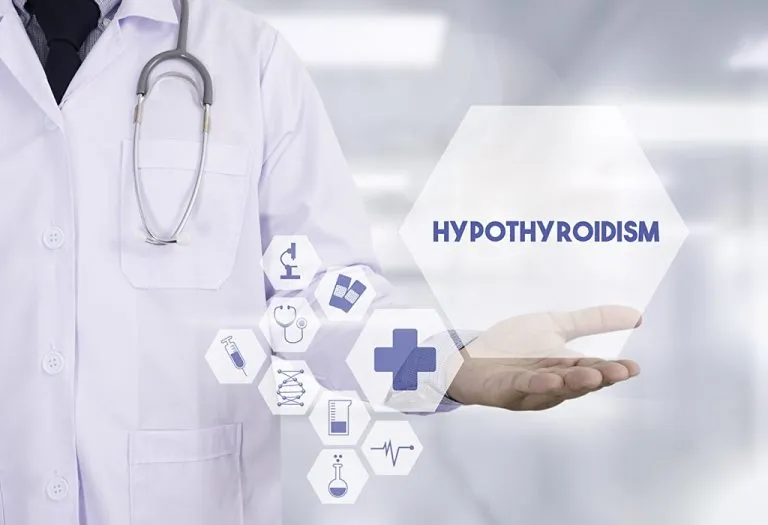Protein in Child’s Urine (Proteinuria) – Reasons, Risks, Treatment and Prevention
- What Is Proteinuria in Children?
- How Common Is Proteinuria in Children?
- Types of Proteinuria Which Are Not Harmful for Kids
- Causes of Proteinuria in Children
- Signs and Symptoms of Proteinuria in Children
- What Are the Possible Complications and Risk Factors of Proteinuria in Children?
- Diagnosis of Proteinuria
- How to Treat Proteinuria in Children?
- Prevention of Proteinuria
- What Questions to Ask Doctor About Proteinuria?
- FAQs
The kidneys have tiny blood vessels that filter water, salt, and waste from the blood. These are known as glomeruli. They maintain protein in the blood, supporting them in soaking up water from tissues. A major protein function in the blood is maintaining the body’s fluid levels. Once these filters are flawed, protein can seep from the blood into the urine. This results in proteinuria, a disease related to too much protein in urine in child patients. Albuminuria or urine albumin are other names for proteinuria.
The extra protein in your child’s urine can’t be visible. However, it can be related to swelling in their ankles, legs, and eyelids. High blood pressure is one more sign of this condition. Read on to learn more about the causes and strategies for managing and preventing proteinuria in children.
What Is Proteinuria in Children?
Proteinuria in children refers to the presence of an abnormal amount of protein in the urine. Normally, urine contains very little protein, but elevated levels can indicate a potential issue. Although proteinuria is painless and usually harmless and may result from exercise, fever, or stress, it can also indicate latent kidney disease or a disease in some other part of your child’s body. At times, infection or chemicals hurt the kidneys, which affects the kidneys’ functioning. Proteinuria will be cured as the infection is treated in case of an infection. Protein in the urine can also be linked with type 1 and type 2 diabetes (4).
How Common Is Proteinuria in Children?
Doctors have diagnosed proteinuria in around 2 or 3 in 100 children of any age. In most cases, proteinuria is mild and harmless. About 1 in 100 children have lasting proteinuria, and this type of proteinuria may be more profound (6).
Types of Proteinuria Which Are Not Harmful for Kids
Not all instances of proteinuria indicate a severe health issue. In fact, there are specific types of proteinuria in children that are generally considered harmless and temporary. Here, we will discuss two common types (1).
1. Orthostatic Proteinuria
Orthostatic proteinuria occurs when a child has an elevated amount of protein in their urine during the day while they are active, but normal levels when they are lying down or sleeping. This type is usually harmless and does not indicate kidney disease. It often resolves on its own as the child grows older.
2. Temporary Proteinuria
Temporary proteinuria is a temporary increase in urine protein levels, often triggered by factors such as fever, strenuous exercise, or dehydration. This type is typically short-lived and does not pose any long-term risks to a child’s health. It usually resolves once the underlying cause is addressed.
Causes of Proteinuria in Children
Protein in urine in a child could be due to mild health conditions or as an outcome of other medical conditions. The mild conditions may comprise:
- Gravitational force
- Lack of hydration
- Aspirin treatment
- Cold climate
- Worry and pressure
- High body temperature
- Noticeable protein in the urine after an intense physical exercise
Persistent Proteinuria could signal a latent illness such as (7):
- Nephrotic syndrome in childhood.
- Glomerular disorders
- Infections in the urinary tract
- Immune disorders like Goodpasture’s syndrome or lupus
- Cardiac disorders
- Renal abnormalcy
- Renal cancer
- Intravascular hemolysis (a condition where red blood cells are broken, and haemoglobin is discharged into the blood flow)
- High levels of toxins
- Acute kidney damage
- Hypertension
Signs and Symptoms of Proteinuria in Children
Most children with proteinuria do not show any symptoms (3). You cannot usually notice protein in the urine, but sometimes the urine looks bubbly. Proteinuria is painless. When the kidneys seep out a lot of protein, this is called nephrotic range proteinuria, which gives rise to nephrotic syndrome. Children often have bulges in their bodies, specifically their feet, legs, and face.
Hematuria is a condition in which blood is present in the urine. When there is a lot of blood, the urine may be dark brown or red, which occasionally happens with proteinuria. Children with asymptomatic proteinuria often have orthostatic or transient types. When persistent proteinuria occurs, the following symptoms may be observed.
- Recurrent urination
- Muscle contractions (particularly at night)
- Foamy urine
- Puffy eyelids, hands, and feet
- Nausea
- Loss of appetite
What Are the Possible Complications and Risk Factors of Proteinuria in Children?

Some children may be at risk of proteinuria due to the following factors.
- Any heart disease
- Hypercholesterolemia
- Overweight
- High blood pressure
- High cholesterol
- A family history of a chronic renal disease
- Urinary tract problems or kidney-related problems at birth
- When a child has high blood pressure and proteinuria, it may result in a stroke or heart attack. This heightened pressure may cause other chronic kidney diseases, including kidney failure.
- Similarly, kidney problems and higher cholesterol levels in the blood are not a good sign, as they could increase the child’s risk of a heart attack.
Diagnosis of Proteinuria
Urine tests are performed to determine the occurrence of protein in the baby’s urine. Since protein in paediatric urine cases might be short-lived, a morning urine sample and the one collected later that day can facilitate better understanding. Apart from this, the following tests can also be helpful (5):
- In cases of orthostatic proteinuria, the morning sample would be protein-free. If there are other symptoms, serial tests provide certain protein urine values.
- Your paediatrician will also suggest a 24-hour urine collection to evaluate the protein level in the urine.
- If a high protein level in the urine is found, your child’s doctor may suggest some tests for advanced assessment. Imaging tests such as MRI, CT scan, or ultrasound of the urinary tracts and kidneys may be done to check blockages or tumours.
- Blood tests like kidney biopsy can also help determine the glomerular filtration rate and creatinine levels.
How to Treat Proteinuria in Children?
Your child will not require treatment for:
- Orthostatic Proteinuria – occurs when the kidneys seep out a very small amount of protein during the day, especially after an exercise session or when standing up.
- Mild proteinuria that cures after the first urine test – may occur during a fever or an infection in the urinary tract.
However, your child may require treatment for:
- Persistent proteinuria where the proteinuria does not fade
- Nephrotic syndrome
- Kidney damage if it is doubted
No treatment is required when your child has small amounts of protein in the urine. At times, your paediatrician will test your child’s urine again after some months to check if the amount of protein in the urine decreases. If the amount of protein in the urine doesn’t change or there is more protein, your doctor will refer you to a kidney specialist (a nephrologist). The nephrologist might carry out a kidney biopsy. (In this test, a tiny tissue from the kidney is removed with the help of a needle and then looked at under a microscope.) When your doctor figures out the cause of the protein in your child’s urine, they can suggest the best way to address the problem.
Regardless of what caused the kidney problem, a few simple measures can benefit your child. Reducing salt consumption can bring down swelling. Medicine can check the inflammation (swelling) of the kidneys that may cause the protein to get into the urine. This medication is usually prescribed in a high dose at first, and the dosage is tapered later on. Some children have been prescribed a low dose of the medicine for months or even years. It’s vital to abide by your doctor’s instructions, and it’s also crucial to visit the doctor for regular checkups (2).
Prevention of Proteinuria
Proteinuria can never be avoided or prevented. Nevertheless, you can maintain good renal health by drinking lots of water daily, and more fluid will flush waste out of your kidney. Indeed, proteinuria cannot be prevented, but you can prevent its development into a chronic illness. Once the primary latent cause of persistent proteinuria is found, you can take preventive steps based on it. Lifestyle modifications and diet changes are beneficial if the cause is hypertension, diabetes, or a kidney issue. It is also suggested that you consult a nephrologist regularly.
What Questions to Ask Doctor About Proteinuria?
If your child is diagnosed with proteinuria, then it is evident that you will have many questions for the paediatrician. So, regardless of whether your child has been diagnosed or you want to take precautionary measures just in case, here are some questions that will help you understand the disease better:
- What course of treatment will my child require?
- How will the treatment assist my child?
- What are the side effects of the treatment?
- How can I make my child get ready for treatments?
- What will be the next step if the first treatment does not work for my child?
- How will I know if we need to return to the hospital or visit the doctor?
- Could swelling in the ankles, legs, and eyelids be due to something else?
- Is proteinuria life-threatening if treatment is not done?
- Is there anything I can do so that proteinuria goes away?
- Is there any link between proteinuria and eating too much protein?
FAQs
1. How often should children with proteinuria be monitored?
The frequency of monitoring depends on the severity and underlying cause of the proteinuria. Children with benign conditions may require periodic check-ups, while those with underlying health issues may need more frequent monitoring by a healthcare provider to manage their condition effectively.
2. What role do genetics play in proteinuria?
Genetics can play a role in proteinuria, especially in conditions like Alport syndrome, familial focal segmental glomerulosclerosis, or inherited kidney diseases. If there is a family history of kidney disease, genetic counselling and testing may be recommended (8).
3. Could a urinary tract infection (UTI) cause proteinuria in a child?
A UTI in a child can be a potential cause of proteinuria. UTIs can lead to inflammation and irritation in the urinary tract, which may result in high protein in a child’s urine. If proteinuria is detected along with symptoms of a UTI, seeking medical evaluation and treatment is essential.
While proteinuria in children can be alarming, it is not always a sign of a severe problem. Recognising the different types of proteinuria, understanding their potential causes and risks, and knowing when to seek medical advice can help ensure appropriate management and treatment.
References/Resources:
1. Proteinuria in Children; American Academy of Pediatrics; https://www.healthychildren.org/English/health-issues/conditions/genitourinary-tract/Pages/Proteinuria.aspx
2. Proteinuria in Children; American Academy of Family Physicians; https://www.aafp.org/pubs/afp/issues/1998/1001/p1158.html
3. Protein in the Urine (Proteinuria) in Children; Mid-Atlantic Permanente Medical Group; https://mydoctor.kaiserpermanente.org/mas/structured-content/Symptom_Proteinuria_in_Children_-_Pedi_Neph.xml?co=%2Fregions%2Fmas
4. Proteinuria in Children; National Kidney Foundation; https://www.kidney.org/atoz/content/proteinuria-children#
5. Protein in Urine (Proteinuria); Children’s Hospital of Philadelphia; https://www.chop.edu/conditions-diseases/protein-urine-proteinuria
6. Proteinuria; infoKID; https://infokid.org.uk/conditions/proteinuria/
7. Haider. M. Z, Aslam. A; Proteinuria; National Library of Medicine; https://www.ncbi.nlm.nih.gov/books/NBK564390/
8. Akchurin. O, Reidy. K. J; Genetic causes of proteinuria and nephrotic syndrome: impact on podocyte pathobiology; PubMed Central; https://www.ncbi.nlm.nih.gov/pmc/articles/PMC4262721/
Also Read:
Pica in Kids
Herpangina in Kids
Frequent Urination in Children
Mesenteric Adenitis in Children
Blood in Urine (Hematuria) in Kids
Was This Article Helpful?
Parenting is a huge responsibility, for you as a caregiver, but also for us as a parenting content platform. We understand that and take our responsibility of creating credible content seriously. FirstCry Parenting articles are written and published only after extensive research using factually sound references to deliver quality content that is accurate, validated by experts, and completely reliable. To understand how we go about creating content that is credible, read our editorial policy here.























